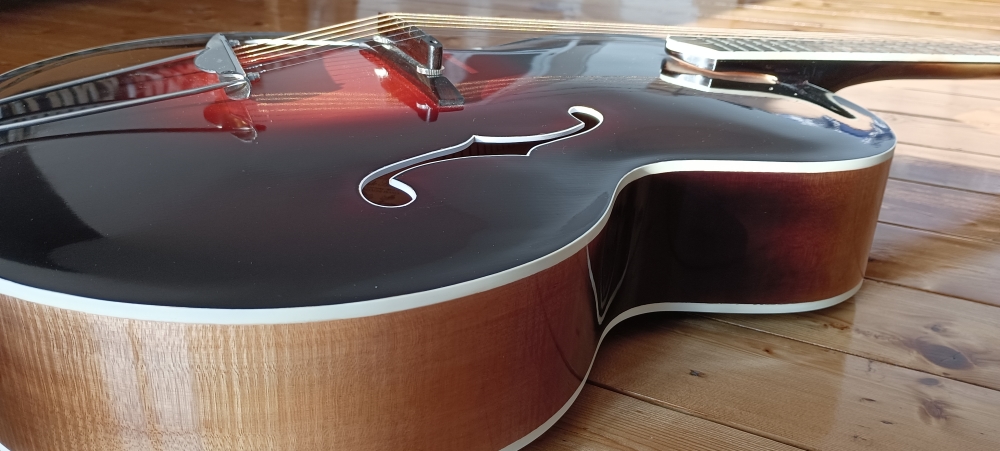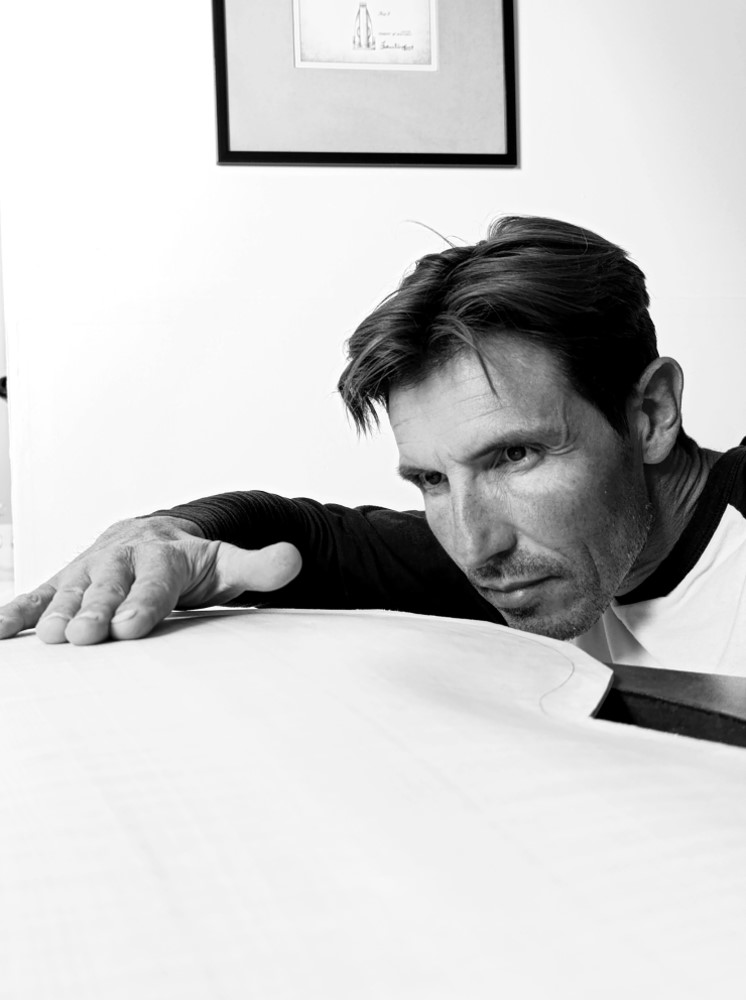Why choose
this particular instrument? :
- This
type of guitar was born in 1923
in the United States at the instigation of Gibson sound engineer Lloyd
Loar, who had the idea of adapting to the guitar the construction
methods used for violins and other string quartet instruments.
- It
was the first
guitar to feature an arched top and back, as well as f-shaped
soundholes.
- This
model was a 16” and, even
back then,
cost twice
as much as a Martin flat top.
- For
me, it's not only the best-designed acoustic guitar there is, but also
the most elegant, with its harmonious shapes. To draw a car parallel,
it's for me the Rolls-Royce of guitars.
- A popular
type of
guitar
with jazz players, it is also a virtuoso fingerstyle player.
- The sound
of these guitars is more percussive, with a strong projection (observe
the projection of a violin compared to its size, it's impressive and
partly due to the arches).
- I use
only top-quality tonewood for my instruments (curly maple for the back,
sides and neck, European spruce for the soundboard, and ebony for the
fingerboard, headstock and bridge).
- This wood
is
quarter-cut, essential for carving and giving it its characteristic
arched shape. This also gives the wood greater stability and, for the
soundboard, better vibratory qualities.
- I shape 98% of the instrument with hand
tools that don't use electricity (the method of the old luthiers).
- All our
guitars are
varnished using the traditional “Tampon” method and natural shellac
(secretion of a cochineal insect) which, while protecting the surfaces,
preserves the vibratory properties of the wood. Everything is made
in-house, even the tailpiece, which is made of high-quality stainless
steel.
- I was
inspired by
some of the most renowned American, Canadian and Européen Archtop
luthiers, such
as Buscarino, Benedetto, Ken Parker, Yanuziello and Théo Scharpach, but
also by pre-war
models from Gibson and Epiphone. My instruments are different, however,
with more rounded arches and wider sides, resulting in a guitar with a
stronger voice.
The
workshop produces few instruments, all unique pieces, handmade
with the greatest care, attention to detail and the quest for the best
sound quality... unattainable perfection at least allows the pursuit of
excellence...
|
 located in the
heart of the commune of Crach, in southern
Morbihan,
Brittany, specializes in the manufacture of Archtop Acoustic Guitars.
located in the
heart of the commune of Crach, in southern
Morbihan,
Brittany, specializes in the manufacture of Archtop Acoustic Guitars.



